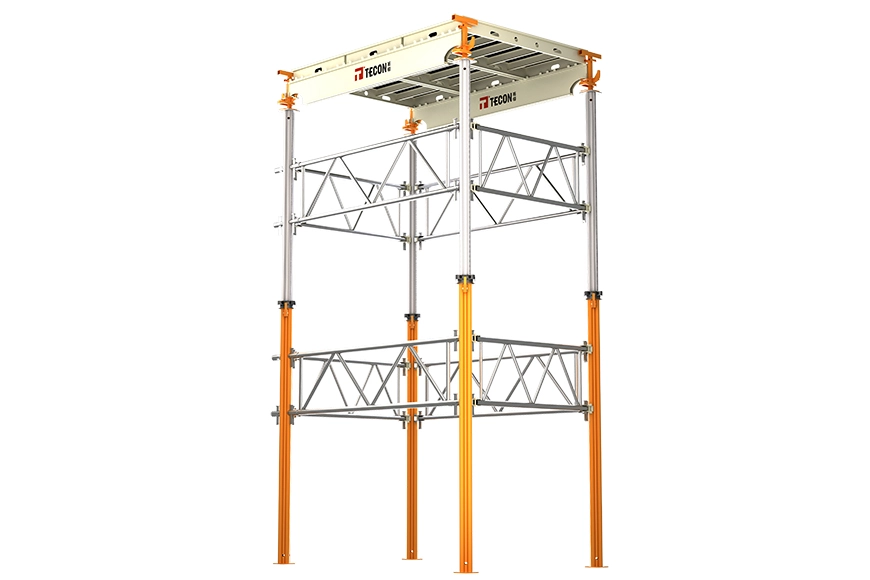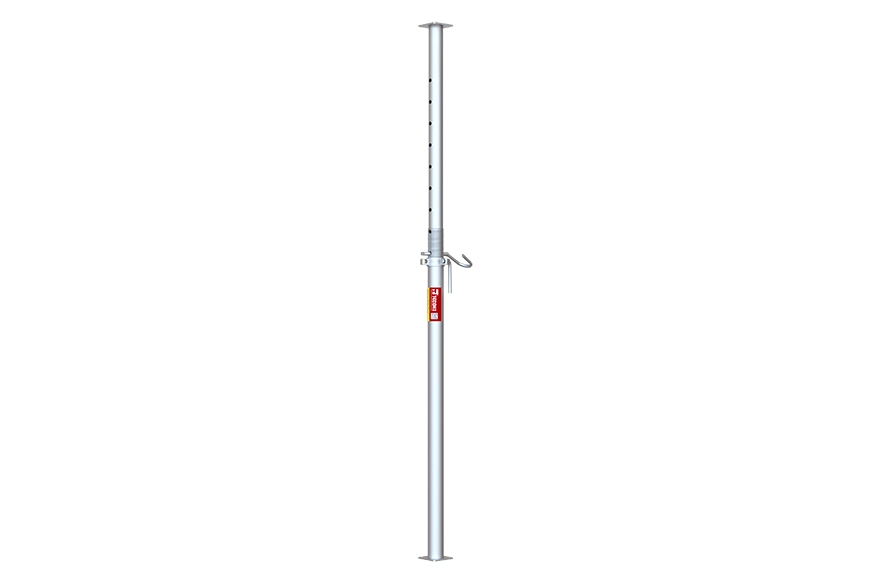Climbing formwork consists of three parts: the climbing template, the climbing frame (some climbing formworks do not have a climbing frame), and the climbing equipment. It is an effective tool in tall structures such as construction shear wall systems, tube systems, and bridge piers.
Because of its self-climbing ability, there is no need for lifting machinery, which reduces the workload of transporting machinery during construction. The scaffold can be hung on the self-climbing formwork, eliminating the need for external scaffolding during construction. In summary, climbing formwork can reduce the number of lifting machinery, accelerate construction speed, and thus have good economic benefits.
Before the hydraulic climbing formwork enters the site, check whether the qualification check information and usage instructions of the related manufacturer are complete.
Before installing the formwork, measure the reference points on the cap and level it to facilitate the installation of the formwork.
After the installation of the hydraulic climbing formwork is completed, the project chief engineer will organize relevant departments to accept the whole system and sign for confirmation. The hydraulic system will be debugged by professional personnel, and if necessary, pressure testing will be conducted by the manufacturer.
The hydraulic climbing formwork implements a fixed staffing system, strictly limits the number of materials and tools placed on the operation platform, and prohibits overloading.
Protective railings and safety nets should be set up at the edges of the hydraulic climbing formwork operation platform, with dedicated passages at the corners, and protective railings added.
After the installation of the formwork is completed, install the embedded parts first. Smear butter on the cone pins and embedded positioning holes when installing embedded parts, and add ring ribs at the embedded openings. (The embedding length of the cone pin should not be less than 430mm). Before the hydraulic climbing formwork climbs, remove unnecessary loads such as rebar heads and gas cylinders from the operation platform, and fix tools like toolboxes and distribution boxes.
Strictly implement the acceptance and confirmation system by technical personnel before the hydraulic climbing formwork ascends. The laboratory will conduct strength tests on the specimens under the same conditions, ensuring the concrete strength at the support stress points is not lower than the design requirement value or not less than 15MPa.
When the climbing formwork climbs, first lift the system 2cm and stop, checking whether each stress point is normal. Operators should not stand on the climbing formwork and frame during the climbing process. A warning line should be set up within 3 meters around the lower end of the climbing formwork, prohibiting all personnel from entering the warning area to prevent objects from falling from a height.
Before, during, and after each ascent, check the hydraulic climbing formwork components and safety devices, and timely attach and fix the hydraulic climbing formwork after ascending to the position.
When encountering severe weather such as strong winds, dense fog, or thunderstorms, high-altitude operations should be stopped, and reliable fixing and protective measures should be taken.
Before the hydraulic climbing formwork is dismantled, a dismantling plan should be prepared, protective measures should be taken, and a retreat passage for the operating personnel should be reserved.





